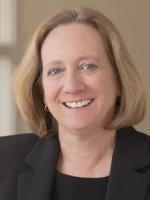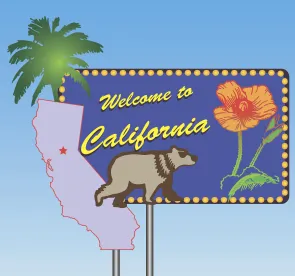On February 19, 2022, California employers with more than 25 employees must begin complying with California’s latest paid sick leave legislation (Senate Bill 114 to be codified as Cal. Labor Code § 248.6) and provide supplemental paid sick leave to covered employees who are unable to work or telework due to COVID-19 related reasons. While similar to California’s 2021 COVID-19 Supplemental Paid Sick Leave law, there are some distinct differences about which employers should take note:
-
SB 114 Covers Employees and Their Family Members
The 2022 law has been expanded to allow employees to use supplemental paid sick leave to care for family members impacted by COVID-19. “Family members” include children, parents, spouses, registered domestic partners, grandparents, grandchildren, and siblings.
-
SB 114 Establishes Two 40-Hour Supplemental Paid Sick Leave “Banks”
Like its 2021 counterpart, the 2022 law provides up to 80 hours of supplemental paid sick leave for employees. However, the new law differs in the way it allocates those hours. It establishes two separate 40-hour “banks” of leave allotment, each with different requirements and to be used for different purposes:
Bank #1 – Up to 40 hours for COVID-Related Reasons
Under SB 114, an employee can use up to 40 hours of supplemental paid sick leave if they are unable to work or telework for the following reasons:
-
They are subject to a quarantine or isolation period due to COVID-19, as defined by federal, state, or local orders or guidance.
-
They have been advised by a health care provider to isolate or self-quarantine due to COVID-19 concerns.
-
They are experiencing COVID-19 symptoms and seeking a medical diagnosis.
-
They are caring for a family member who is subject to a quarantine or isolation order, or who has been advised to isolate or self-quarantine by a health care provider, due to COVID-19 concerns.
-
They are caring for a child whose school or place of care is closed or otherwise unavailable for reasons related to COVID-19.
Employees may also use these hours:
-
To attend an appointment for themselves or a family member to receive a COVID-19 vaccine or vaccine booster.
-
If they are experiencing symptoms or caring for a family member experiencing symptoms related to a COVID-19 vaccine or vaccine booster that prevents the employee from working or teleworking.
With respect to leave provided for symptoms associated with vaccines or boosters, employers may limit the total supplemental paid sick leave to 3 days or 24 hours. If more leave is requested, an employer may require the employee to provide verification from a health care provider that the employee or family member is experiencing continuing symptoms related to a vaccine or vaccine booster; this limitation applies to each vaccine/booster and includes the time used to obtain the vaccine/booster.
Bank # 2 – Up to an Additional 40 Hours for Positive COVID-19 Tests
Under SB 114, an employee may qualify for up to an additional 40 hours of leave if they test positive or are caring for a family member who tested positive for COVID-19. Employees do not need to exhaust all supplemental paid sick leave from Bank 1 before using leave from Bank 2. Significantly, in these cases, SB 114 authorizes an employer to require proof of a positive test result—including proof of an affected family member. SB 114 specifically provides that an “employer has no obligation to provide additional COVID-19 supplemental paid sick leave…for an employee who refuses to provide documentation of the results of the test…upon the request of the employer.”
If the employee is using this bank for their own positive test, an employer may also require testing on day five after the initial positive test.
-
SB 114 Provides Credit to Employers Who Already Provided Supplemental Paid Leave
Employers who have already provided supplemental paid leave (beyond regular paid sick leave, vacation time, etc.) for time off taken on or after January 1, 2022, may count those hours towards an employee’s SB 114 supplemental paid leave allotment, if the leave was used and paid for reasons provided under SB 114; and the compensation for those hours was equal to or greater than the compensation the employee would have received under SB 114.
-
SB 114 Prohibits Employers from Requiring Employees Exhaust Other Benefits Before Using SPSL
Under SB 114, an employer may not require employees to use any other paid or unpaid leave, time off, or vacation time before, or in lieu of, using supplemental paid sick leave. Employers are also no longer allowed to require employees to first use and exhaust supplemental paid sick leave while the employee is entitled to “exclusion pay.” In other words, if Cal-OSHA standards require employers to maintain an employee’s earnings when an employee is excluded from the workplace due to COVID-19, then employers cannot require an employee to first exhaust supplemental paid sick leave.
-
SB 114 Includes New Wage Statement Requirements
The new law expands an employer’s requirements with respect to information contained on wage statements. Specifically, SB 114 requires employers to provide employees with written notice, either through a wage statement or a separate writing provided on the designated pay date with the employee’s payment of wages that sets forth separately from regular paid sick days:
-
the amount of supplemental paid sick leave available; and
-
the amount of supplemental paid sick leave the employee has used through that pay period, including if the employee did not use any supplemental paid sick leave during the pay period.
If an employee has not used any SPSL, the employer shall list zero hours on the paystub. This should reduce the burden on employers from having to make complicated calculations each pay period (as required under the prior law). In addition, SB 114 says SPSL hours used should be listed separately from regular paid sick days.
-
SB 114 Includes a New Pay Rate Calculation for Non-Exempt Employees
Unlike SB 95, which required employers to utilize the rate of pay that was the highest under several different calculations, SB 114 defines regular rate of pay more in line with other paid sick leave methodologies. Under the new law, for nonexempt employees:
-
The regular rate is calculated in the same manner as the regular rate of pay for the workweek in which the employee uses paid sick time, excluding any overtime pay if the employee works overtime in that workweek; or
-
The regular rate is calculated by dividing the total wages, not including overtime premium pay, by the total non-overtime hours worked, in the full pay periods of the prior 90 days of employment;
For exempt employees, the regular rate is calculated in the same manner as other forms of paid leave time.
The amount of pay an employer is required to pay for supplemental paid sick leave is capped at $511 per day and $5,110 in the aggregate to a covered employee.
Laws requiring compliance by employers as to various aspects of COVID in the workplace are continuing to evolve on the federal, state, and local level. Please feel free to reach out to any member of our team if you have questions about the law in your jurisdiction.





 />i
/>i
